I am passionate about this topic as I really believe that this is an area a lot of firms can improve to sign up more cases without spending any additional dollars. I am going to be throwing a lot of statistics out and you might get tired of looking at graphs and numbers, but as it relates to lead follow up I think these numbers are important because most people I talk to do not have a good idea on what these results are within their own firm.

I am going to start with what is the biggest issue firms have with lead follow up and that’s following up on a lead immediately. This study from MIT used the barometer of 60 seconds to initially reach out to a potential client. That time frame is a lot of times difficult to accomplish so what I would tell you is to make 5 minutes your gold standard. Reaching out to a lead within the first 5 minutes you receive the information should take priority over pretty much anything else your firm is doing at that time. You can see on this chart just how quickly your chance of connecting with a lead drops after that 5-minute mark.
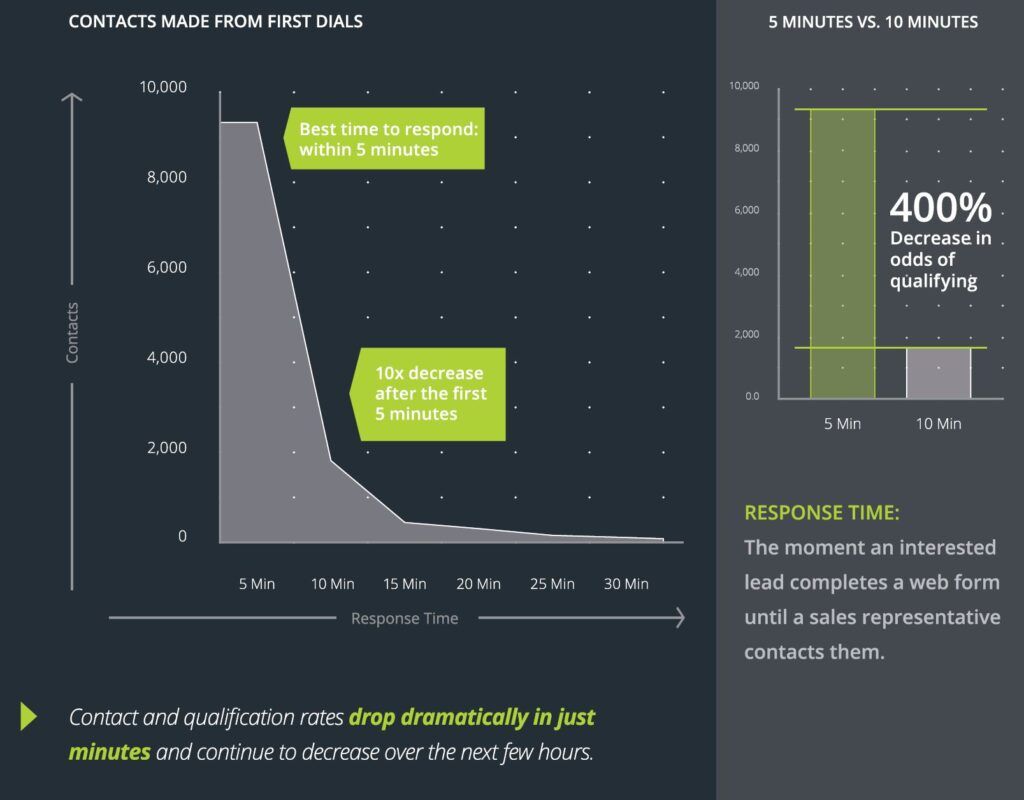
Another fact that is very true is that you cannot litigate or settle a case that you don’t have. So, make sure that following up immediately with a web inquiry, chat lead, a call that your answering service took and even the leads from your 3rd party lead generators takes precedence over anything else. It is difficult to fathom what 238% increase of your chance of signing a qualified client over your competitor could mean for your firm, but I am willing to bet that number would make a sizable impact for any firm. Assumptions are dangerous. I say that because whether people like to admit it or not, I see too many firms make the assumption that just because a claimant reached out to your firm, they only want to sign with you. A more accurate assumption to make is that if a claimant has reached out to your firm, they have also reached out to at least two other firms as well.
This is especially true for website contact firms and chat leads. Consumers who go down the path of researching law firms online are the majority of the time submitting their information on multiple sites, so this is where that increase in sign up percentage on first contact really comes into play.
This next item is something that comes up a lot with me when I am on a presentation of Captorra and are reviewing our own automated follow up tool. People will ask “how do we not piss off the potential client by contacting them to much?” My answer always is, don’t worry about that and let them tell you that they are not interested in your services. This chart is a study conducted with 500 consumers across the country for varying services.
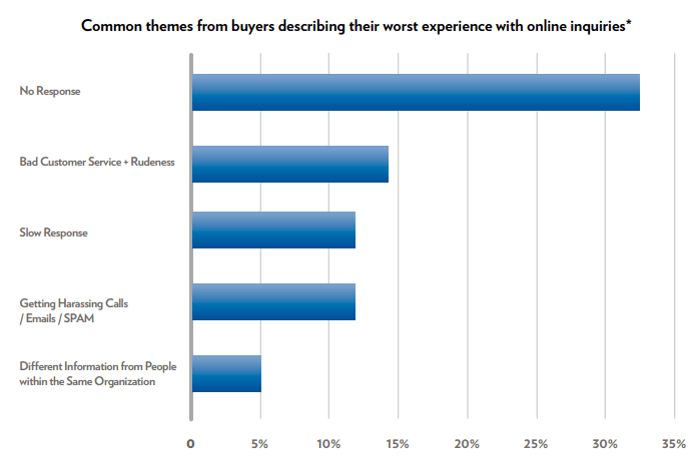
What immediately jumps out to me is that 2 of the top 3 complaints consumers have about submitting a web inquiry is that they never got contacted back or that the response took too long. The alternative to following up too much is that they just end up signing with another firm. Even if the potential client doesn’t have a case, your competition is still able to get in touch with them first and is able to plant the seed of marketing for how they can help them and their family and friends in the future.
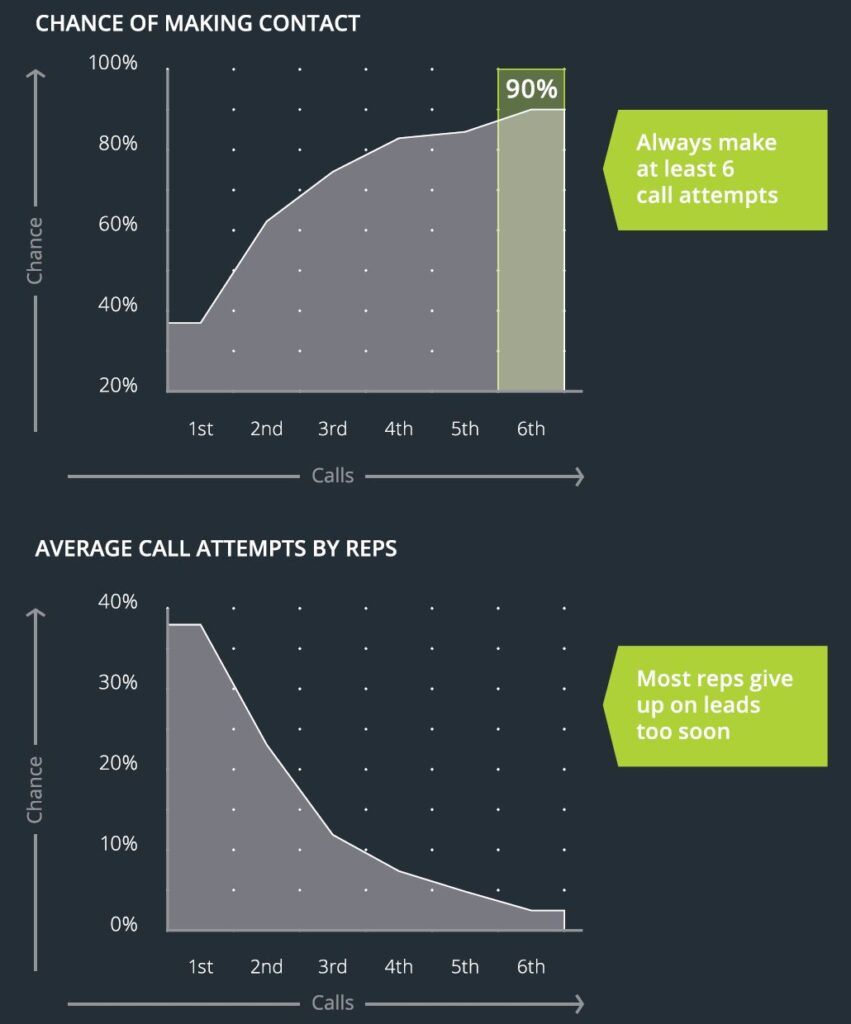
Now that we have talked about how you shouldn’t really be concerned about following up too often, let’s talk about what that should like. These numbers are from a report across 5,000 leads in 2016. The absolute minimum number of attempts you should be making before giving up on that lead is 6.
The numerous follow up attempts needed to reach a potential client does bring me to something I want to mention that is extremely important for a firm looking to scale. Your firm should really look to dedicate a staff member or department for following up with leads. In my experience, attorneys and legal staff are not great at following up with potential clients and I completely understand why. Your day as a legal staff member within a firm is prioritized by your current case load. Whether people like to admit it or not, their ability to quickly call a new lead, or to make that 6th attempt to reach out to a lead can be hindered by other priorities in their day. Not only that, it takes a completely different mentality to “smile and dial”. Most people within a firm can successfully take a direct phone call from a potential client and go through an intake, but that same person isn’t necessarily equipped to successfully jump on a lead right away or call them for the 6th time which is what is needed to convert them into a signed client.
It is also important to make sure you are not simply relying on phone calls and voicemails to connect with your leads. People today just simply do not answer the phone. We as consumers are trained to wait and see what the person calling wants before deciding how to proceed. Along with utilizing these different methods, it is also important to provide valuable content to the claimant with each touch point. Whether you’re leaving a voicemail, sending an email or text, make sure that each time you reach out you are providing something different of value to that potential client. That could be stressing how time is of the essence or stating your firm’s successful track record with their type of case, it is extremely important to make sure your messaging isn’t stale and that there is something there to prompt them to contact you back versus a competitor.
To take this a step further, I want to specifically focus on the importance of leveraging text messaging as part of your follow up process. Here are some more numbers from a study from last year that show how much more effective text messaging is over email.
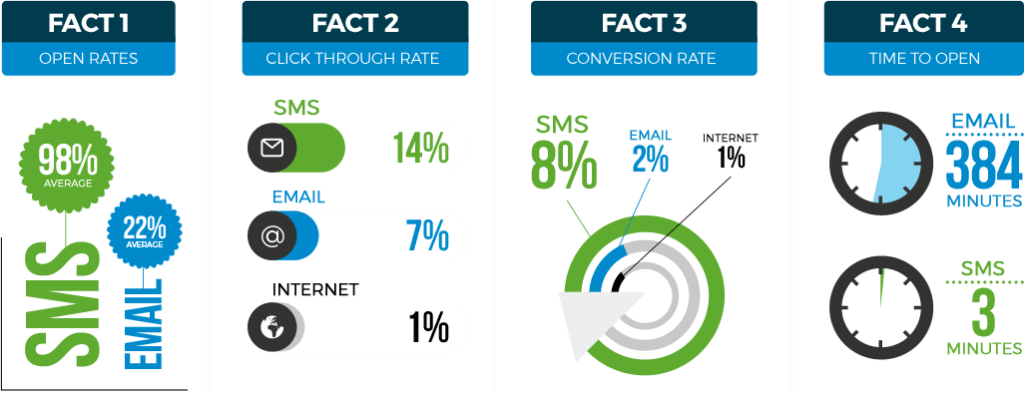
Most firms I talk to today have gone down the path of utilizing some type of email communication as follow up, even it is manual. Most groups however have not gotten on the text messaging bandwagon and I believe this is extremely detrimental in today’s market. The fact that 98% of text messages are opened versus 22% of emails shows how much more effective text messaging is. The last fact regarding time to open is extremely important as well. 3 minutes for text messages versus an average of 384 minutes for emails can easily make the difference of you connecting with your next client versus another firm. Even if a potential client does end up opening your email, it most likely is going to take them much longer to respond than if it was a text message. Given this information, it is extremely important to implement text messaging as part of your process. The excuse of “my client base doesn’t have smartphones or won’t respond to text messaging” is a very lazy and dangerous excuse.
I want to talk about following up at different times of the day. These numbers are probably not all that surprising to a lot of you, but I see specific staff making the mistake of following up at the same time with a potential client repeatedly.
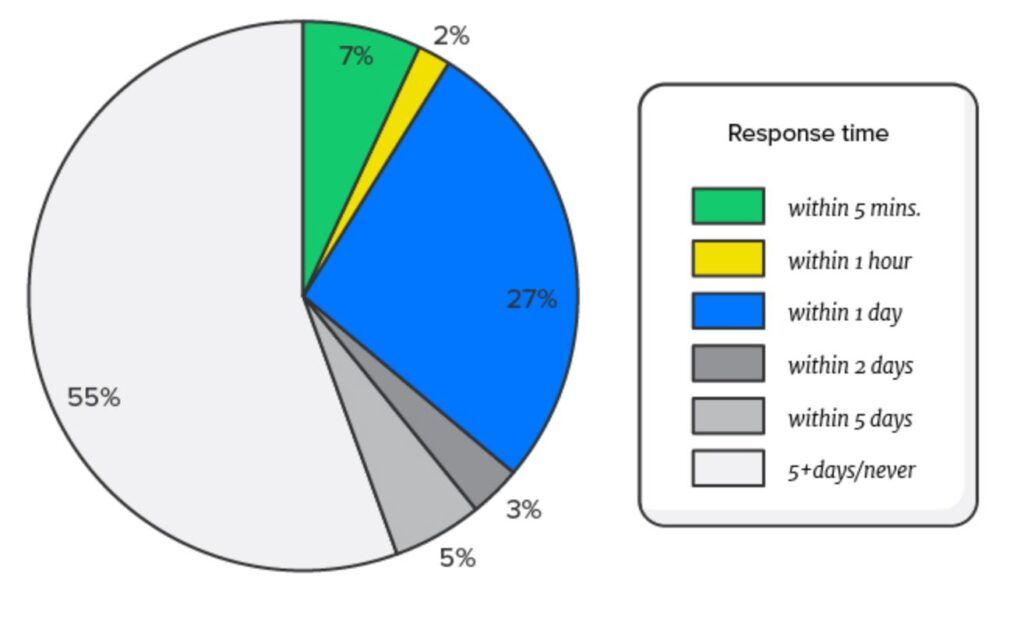
I believe it is there way of easily remembering that they need to follow up again with a claimant which is a great mentality to have but doing so at the same time every day is a big waste of your time. If someone can’t answer the phone or get back to you at 10:30 AM because they are sitting at work on a Monday, it is probable that they can’t do it on Tuesday, Wednesday, Thursday or Friday either. So really try to track when you are making these attempts and stagger them at different times for each one. On top of this, I would highly recommend making your follow up attempts after the initial reach out early in the day and later in the afternoon. Before 9:00 AM and after 4:00 or 5:00 PM tend to by the time that the average person can take the time to discuss their case with you. If at possible, try to even have someone at your firm making follow up attempts on the weekend.
The last main point I want to cover is the need to track all this data that we have been discussing. It is impossible for you to know what is and isn’t working and make changes based on that if you don’t have the analytics to utilize. It is critical that you know when leads are coming into your firm, on average how quickly you are making that first initial call and how many attempts your staff is making after that. This report lets me know exactly when a lead came into my firm, how many attempts have been made to reach the potential client, when those attempts were made and by who. I can look at this and know how often leads are being contacted right away and how often we are exhausting efforts with that 6th attempt versus letting leads sit in the system.

Everything we have talked about today does not cost you any extra dollars out of your pocket to implement, it just takes discipline and accountability.
If you are not utilizing a specific lead follow up tool like Captorra, it is still critical that you are able to track how well or how poorly your firm is at following up with your web leads. After reading through this, you may think “this is a way too much to fix for my firm”. The good news is that if you fix even just one of these mistakes it would make a huge difference for your practice and most of them don’t cost you a dime. Quit trying to outspend your problem with more marketing and look internally to sign more cases!
